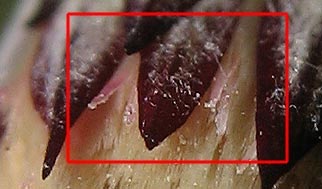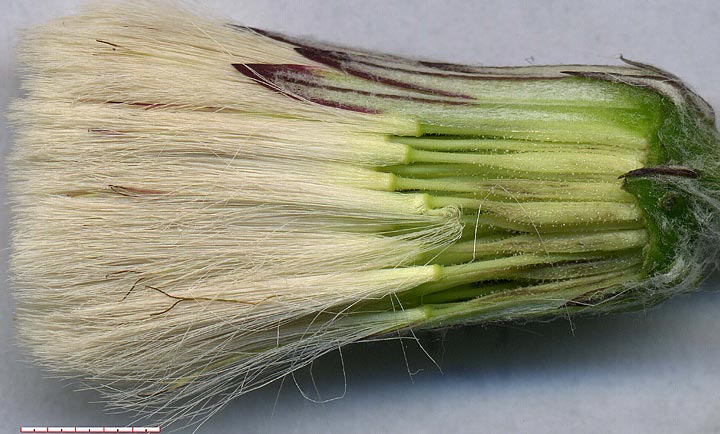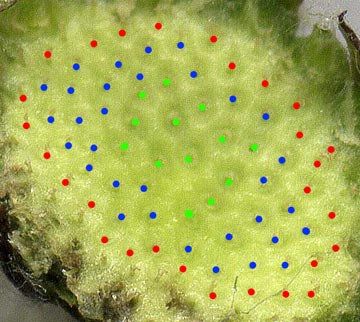


In an attempt to support my hunch that peripheral florets of the C. carduacea type with reduced ligules correspond to those of the type with visible ligules, phyllaries were removed from a relatively advanced head and the outer florets were examined. The specimen, however, was collected on April 15, a late spring phase, and the peripheral florets found had significantly smaller ligules than the reduced florets of early spring phase for this type. Even so, these extremely reduced ligules appeared to differ from the long–tubular corollas typical of late–spring heads in having only one lip as well as turning crimson in age.

Five florets from the edge were removed. Then each was searched for the corolla and style from within the surrounding pappus, which was essentially the same color at early anthesis. [Note that the crimson and darkened objects within the pappus in the above image are style branches.]








The two other florets were similar to the sheath–ligulate floret 2. Not all florets adjacent to the phyllaries are ligulate (1 of the 5 examined was eligulate). Examination of the receptacle (shown below) showed that the head had 73 florets, 28 at the outer edge (red dots below). Eighty percent of these would mean 22 ligulate florets. The receptacle depressions for 13 central florets were somewhat larger (green dots below); these were assumed to be perfect florets. The following table shows that the results with current assumptions compared well with an earlier floret count with another C. carduacea head with visible ligules.

| assumed counts | actual count of second head |
||
|---|---|---|---|
| reduced ligulate, pistillate | 22 | 16 | |
| eligulate, pistillate | 38 | 40 | |
| central perfect | 13 | 12 | |
| total: | 73 | 68 | |